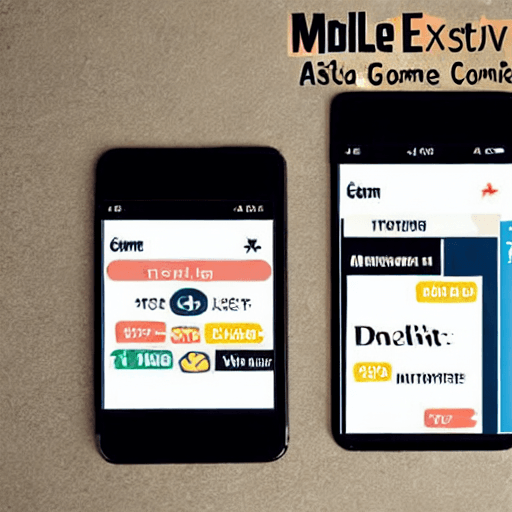

The mobile gaming market is a behemoth. Billions of people worldwide spend significant time and money on mobile games, making it a prime target for digital advertising. However, simply running ads on Meta (formerly Facebook and Instagram) isn’t enough. Competition is fierce, and users are bombarded with ads. To truly succeed, you need to craft mobile-first creative that resonates with your target audience and drives high-quality installs. This comprehensive guide delves into successful meta ad creative examples, optimization strategies, and the key elements that transform impressions into valuable players. We’ll explore what works, why it works, and how you can adapt these techniques to your specific game.
Mobile game advertising is fundamentally different from traditional digital advertising. Users are often on the go, have shorter attention spans, and are actively seeking entertainment. Meta ads, in particular, are a powerful tool, but they require a nuanced approach. Generic ads simply won’t cut it. Success hinges on understanding the mobile gaming audience, their motivations, and the types of creative that capture their attention within the fast-paced environment of the Meta platform. This isn’t about creating a static image or video; it’s about telling a compelling story, showcasing the core gameplay loop, and immediately demonstrating the value proposition of your game. We’ll examine the key metrics that drive success – installs, engagement, and retention – and how your creative directly impacts these numbers.
Before creating any ad creative, you *must* deeply understand your target audience. This goes beyond basic demographics. Consider:
For example, an ad for a fast-paced, competitive puzzle game will look drastically different than an ad for a slow-paced, strategic city-building game. Detailed audience segmentation within Meta’s targeting options is crucial. Don’t just target “mobile gamers”; target “casual puzzle gamers aged 25-45 who enjoy games like Candy Crush.”
Let’s examine some successful mobile game ad creative examples, broken down by category:
Gameplay trailers are arguably the most effective ad format for mobile games. They immediately immerse the viewer in the core gameplay loop. Here’s what makes them successful:
Example: A trailer for a new RPG might showcase stunning visuals, epic battles, and character progression. It wouldn’t waste time explaining the story; instead, it would focus on the visceral thrill of combat and the rewarding feeling of leveling up.
Interactive ads allow users to directly experience a small portion of the game. This significantly increases engagement and provides a more compelling preview.
Example: An ad for a match-3 game could present a mini-game where users have to clear a few rows before the timer runs out. This immediately demonstrates the core gameplay and encourages users to download the full game to continue the challenge.
Animated explainers are effective for games with unique mechanics or complex systems. They can visually break down the rules and demonstrate how the game works.
Example: An ad for a strategy game could use animation to illustrate how units move, attack, and build structures. It would avoid overwhelming the viewer with complex controls and instead focus on the strategic elements.
Leveraging user-generated content can be incredibly powerful. Showcasing positive reviews, gameplay clips, or testimonials builds trust and social proof.
Example: A compilation of short gameplay clips from enthusiastic players, set to upbeat music, can be far more persuasive than a generic promotional video.
Creating a great ad is only half the battle. You need to continuously optimize your campaigns for maximum performance. Here are key strategies:
Constantly test different variations of your ads – headlines, visuals, calls to action, and targeting options. Meta’s A/B testing tools allow you to quickly identify what resonates best with your audience.
Utilize Meta’s dynamic creative features to automatically adjust your ads based on user behavior. For example, you can show different visuals to users who have previously engaged with your ads versus those who haven’t.
Implement robust conversion tracking to accurately measure the performance of your campaigns. Track installs, in-app purchases, and user retention. This data will inform your optimization efforts.
Retarget users who have previously interacted with your ads or visited your app store page. This is a highly effective way to re-engage interested users and drive conversions.
Creating successful mobile game ads requires a combination of compelling creative, strategic optimization, and continuous monitoring. By understanding your target audience, experimenting with different ad formats, and leveraging Meta’s powerful tools, you can significantly increase your chances of driving downloads and building a thriving mobile game community. Remember that the mobile gaming landscape is constantly evolving, so staying ahead of the curve and adapting your strategies accordingly is crucial for long-term success.
Disclaimer: This response is a comprehensive guide to mobile game advertising, but success depends on continuous testing, adaptation, and a deep understanding of your target audience.
Tags: mobile game ads, meta ads, app install ads, mobile game marketing, creative examples, conversion optimization, app store optimization, user acquisition, game advertising
[…] examine some examples of effective meta ads and analyze why they […]
[…] offer unparalleled reach, but simply running a standard desktop ad won’t cut it. To truly win the mobile game, you need to embrace a mobile-first approach to your creative and targeting. This comprehensive […]
[…] level completions, or feature usage – and create Custom Audiences based on this data. Example: A mobile game developer can target users who have reached a certain level in the game with ads offering in-game […]